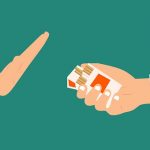Frontotemporal disorders, degeneration, or sometimes called dementia is a big term for a group of brain diseases. These diseases affect the frontal and temporal lobes of the brain. These two areas of the brain are in control of a person’s personality, behavior, and language. Frontotemporal dementia, FTD, is a result of damage to the neurons in the frontal and temporal lobes. Why this occurs is unknown. FTD is rare, but causes about 60% of dementia cases that occur in people 45 years old to 65 years old. You are at a higher risk of FTD if you have a family member who has had it.
Types
There are two common subtypes of FTD. Frontal variant which changes a person’s behavior and personality. The second is primary progressive aphasia. Aphasia is a word for trouble communicating. The two different subtypes of this type of FTD are progressive nonfluent aphasia and semantic dementia. Progressive nonfluent aphasia affects how a person speaks. Semantic dementia affects how a person uses and understands language. There are rarer forms of FTD that affect a person’s movement similar to Parkinson’s disease.
Symptoms
FTD are progressive diseases. Symptoms worsen over time. Symptoms can vary and differ from one case to the next. Some people will have only one symptom to start and then develop more symptoms over time. While others will have clusters of symptoms that tend to occur altogether. The most common symptoms are ones that affect the behavior and personality of someone. Symptoms can include; increasingly inappropriate social behavior, loss of empathy, lack of judgement, loss of inhibition, lack of interest, compulsive behaviors, personal hygiene decline, changes in eating habits, and eating objects. Speech and language symptoms include trouble using and understanding spoken and written language, trouble naming things, not knowing word meanings, trouble with sentence structure, changes in how a person talks may sound hesitant, simple, with only a few words.
Rare subtypes of FTD cause movement symptoms. Movement symptoms include tremors, rigidity, muscle spasms, twitches, poor coordination, trouble swallowing, muscle weakness, inappropriate laughing or crying, falls, or trouble walking.
Diagnosis
Usually a family member is the first to notice a difference in personality or behavior which is when they usually seek a physician’s help. There is no one single test that can diagnose FTD. Your doctor will probably start with blood tests, and physical exams to rule out other possibilities of conditions that can cause similar symptoms. Your doctor may want to check your neurological health such as reflexes, muscle strength, muscle tone, sense of touch and sight, coordination, and balance. Your doctor may also check your neuropsychological health which includes memory, problem-solving, attention span, counting skills, and language abilities. Other tests that may be done are an MRI, CT scan, spinal tap, or PET scan.
Treatment
There is no cure for frontotemporal dementia. There is no treatment to slow down the progression of the disease either. There are some treatment options your doctor can give you to help with symptoms of the condition. Antidepressants may be prescribed to help with anxiety, or obsessive compulsive symptoms. Prescription sleep aids can help with insomnia. Antipsychotic medicines can help treat behavioral symptoms. Behavior management may be suggested. Speech and language pathologists can also help.
Outcomes
FTD can affect anyone. You are at a higher risk of developing FTD if you have a family member who also has the disease. There is no cure. The disease is progressive, so it worsens over time. Prognosis varies per person. It is not a life threatening disease. Some people may live for ten years after they are diagnosed, while others may only live for two years.
As a caregiver it can be hard and stressful to care for someone with FTD. To help with everyday life it can be easier to simplify daily tasks. Other lifestyle changes to consider are to skip events where behavior may not be easily managed, remove negative environmental cues such as car keys, maintain a calm environment as much as possible, and redirect harmful or inappropriate behaviors. As the disease progresses you may need more care, leading to 24 hour home care nurses to help. This type of dementia tends to affect people from age 45 to 65 which is younger than other types of dementia.
Purium Products that support Healthy Aging:
Sources:
https://www.mayoclinic.org/diseases-conditions/frontotemporal-dementia/diagnosis-treatment/drc-20354741
https://www.nia.nih.gov/health/frontotemporal-disorders/what-are-frontotemporal-disorders-causes-symptoms-and-treatment#:~:text=Frontotemporal%20disorders%20(FTD)%2C%20sometimes,is%20what%20terminology%20to%20use.
https://www.hopkinsmedicine.org/health/conditions-and-diseases/dementia/frontotemporal-dementia#:~:text=Frontotemporal%20dementia%20(FTD)%20is%20a,to%20strike%20at%20younger%20people.









